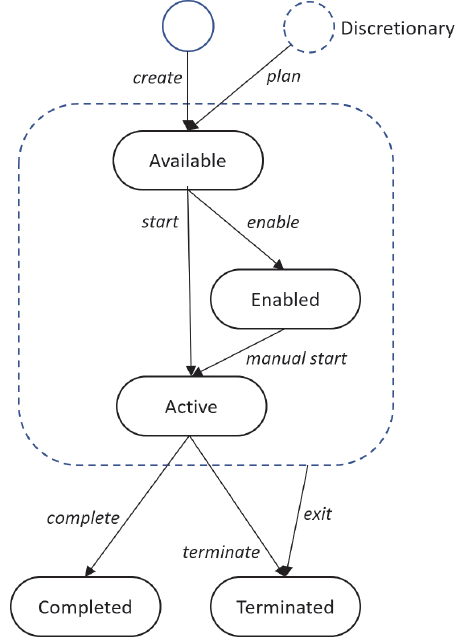Lifecycle States and Standard Events
Lifecycle States
The logic of a case plan model is based on the lifecycle states of each plan item and the standard events generated on lifecycle state transitions. The lifecycle state diagram for tasks and stages is shown below. The oval shapes are the lifecycle states; the arrows connecting them are the standard events.

The Available state of a task or stage means it MAY become Active. A task or stage automatically becomes Available when its containing stage becomes Active, unless conditioned by entry criteria. An Available task or stage automatically becomes Active immediately, unless it is marked Manually Activated, in which case it becomes Enabled.
The Active state of a task means it is currently executing. The Active state of a stage means its contained elements, unless conditioned by entry criteria, are Available. The Active state of a task or stage cannot occur unless it is first Available.
The Enabled state of a task or stage means it is awaiting Manual Activation by a user, at which point it becomes Active.
The Completed state of a task or stage depends on the task or stage details. It is no longer Active.
The Terminated state of a task or stage means it was cancelled by an exit criterion or its parent stage is Terminated. It is no longer Active.
Milestones, event listeners, and case file items also have lifecycle states, but they are simpler.
-
A milestone or event listener may be Available, Completed, or Terminated.
-
A case file item may be Available or Discarded.